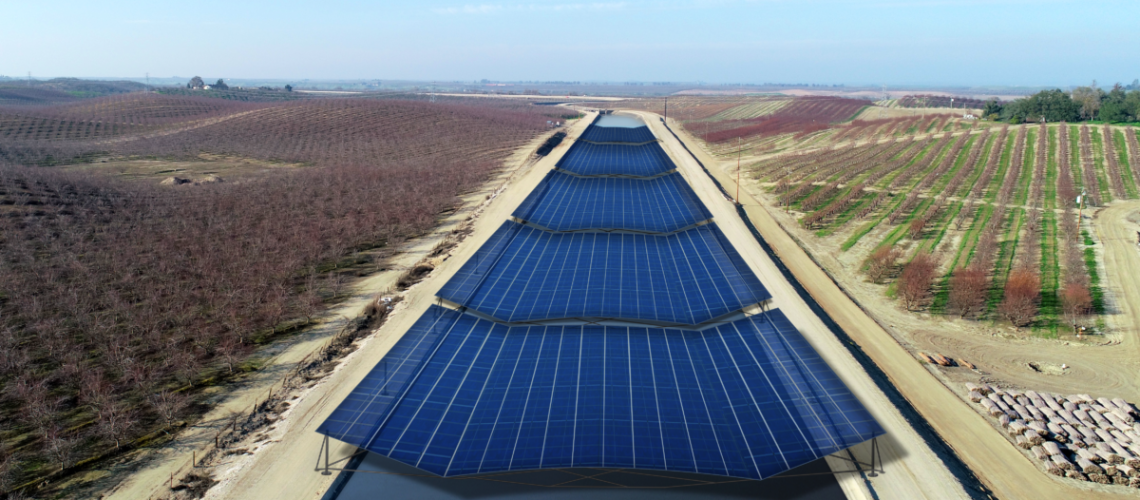A large environmental coalition signed a letter to support solar array construction on 8,000 miles of federal open-air canals.
The U.S. Interior Department and the Bureau of Reclamation received a letter signed by over 125 groups urging the agencies to develop an initiative to develop solar facilities above federally owned and operated canals and aqueducts.
The request, signed by many leading climate and environmental groups, highlighted the opportunity to cover 8,000 miles of open-air canals with solar capacity. An estimated 25 GW of renewable energy, enough to power nearly 20 million homes, could be installed on these locations, the group said.
“The Bureau of Reclamation has full authority to execute this plan. Congress has provided the Department of the Interior with the clear authority to grant leases to authorize uses of Bureau of Reclamation lands, including for utilities, transmission lines, and other appropriate uses,” said the letter.
Installing solar over canals comes with significant co-benefits. First, it saves public land from development. The Energy Act of 2020 created a mandate to deploy 25 GW of onshore renewable energy on public lands without destroying an additional acre of habitat. Covering Bureau of Reclamation canals alone could meet this goal.
Further, a solar canopy over canals leads to less water evaporation through shading and cooling. The groups estimate that tens of billions of gallons of freshwater evaporation could be reduced as a result. This may prove critical, as despite having a wet winter, much of the western United States remains in a long-term drought that is likely to worsen as climate change intensifies.
“The Bureau of Reclamation and the states dependent on the Colorado River are already considering unprecedented water cuts to protect the water supplies for 40 million people who rely on the river,” said the letter. “In a study examining similar action on water canals within California, scientists estimated that shade provided from solar panels could reduce the water loss due to evaporation by 63 billion gallons of water per year, an amount equivalent to annual water consumption of roughly 2 million people per year.”
Many federally operated canals are located in Environmental Justice communities, meaning that adding significant solar capacity can help push out the use of fossil fuels in these communities that are most impacted by the negative health outcomes of fossil fuel production and consumption.
California’s Central Valley Project, a large canal system, alone uses approximately 1 billion kWh of electricity annually to pump water. Bringing solar power closer to these systems would offer an efficient system for moving water, displacing the diesel generators used today.
“Given the Bureau of Reclamation’s long history of creating hydroelectric power, the generation of gigawatts of solar power on its canals would be a purely additive benefit, and could even help address shortfalls in electricity generation as when hydroelectric facilities are unable to operate due to low water levels,” said the letter.
Installing solar on canals is gaining popularity worldwide. Projects in California, India, Spain, and France are underway, with many packing in large utility-scale capacities.



